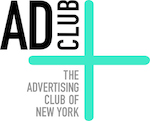The Recent Evolution of Back-to-School Advertising
 By Nolan Johnson, Director of Ad Partnerships at Grocery TV
By Nolan Johnson, Director of Ad Partnerships at Grocery TV
Schools everywhere continue to grapple with the pandemic’s impact, including running hybrid or online classrooms, handling safety concerns, and making sure students have the support they need to succeed.
Brand managers and media buyers have had to constantly pivot and make difficult decisions about how and where to spend their advertising budgets during back-to-school season. So, how exactly has back-to-school advertising evolved in these past 2 years, and which strategies can brands rely on in our current landscape?
Embracing digital
One of the key changes we’ve seen in the back-to-school space, and the ad industry as a whole, is an accelerated shift to digital. Uncertainty has become the norm, which makes flexibility an essential asset. And using digital content allows you to quickly edit campaigns or switch out ads as needed.
Digital platforms, creative videos, and other innovative technologies are becoming more commonplace for brands.
With students spending so much time online and on their phones, it’s important to make sure your brand not only has a strong presence but also provides a positive experience. There has been a rise in immersive virtual campaigns for students such as dorm room design planning, engaging social media campaigns, and “trying on” clothes or accessories using your camera.
However, although many back-to-school shoppers buy items on the internet, only 7% shop entirely online. That means brands have benefited from:
- Aligning their eCommerce and brick-and-mortar shops for a more seamless shopper experience.
- Adding in-person campaigns to their media mix in addition to their other marketing channels.
Research shows that pairing digital out-of-home (DOOH) networks like Grocery TV with other platforms such as social media, mobile, and television can boost campaign performance.
Rethinking OOH and in-store touchpoints
While online and mobile play a key role in back-to-school advertising, the physical store shouldn’t be deprioritized.
In fact, with digital fatigue setting in after years of increased screen time, people are realizing just how important the in-person experience is to them. And we know that more than 70% of retail purchases are still made in physical stores.
Once more in-person and hybrid learning kicked off during the 2021 school year, shoppers saw OOH as a welcome sign of normalcy— and it even played a role in restoring their confidence as they prepped for school.
We think of DOOH networks as an especially effective way for brands to blend physical and digital impact. DOOH allows you to plan, launch, and track campaigns similar to what you’re used to online while also making a real-world impression.
How can your brand cut through the clutter?
With these points in mind, here’s how you can make sure your brand stands out from competitors in the back-to-school space.
Adjust how and where you speak to shoppers
I recommend revisiting (and mapping out) your customer journey(s) to visualize where your brand can interact with customers and which channels fit well in each touchpoint. For example, our recent survey revealed that nearly 3 out of 5 grocery shoppers will also be shopping for back-to-school items this year.
You might assume that say, as a non-endemic apparel brand, it wouldn’t make sense to have a touchpoint in the grocery store. But given that 84% of back-to-school shoppers are also visiting department stores or malls within a few days of grocery shopping, it could be a great opportunity for both endemic and non-endemic brands to build awareness and stay top of mind.
Leverage contextual creative
Whether you’re talking about online or outdoor campaigns, when consumers come across contextually relevant creative they’re more likely to gain interest and interact with your brand. With DOOH, aim to create designs that can be used depending on variables such as special events, locations, traffic, weather, flight statuses, etc. Contextual DOOH creative helps promote engagement and can actually boost campaign effectiveness by 17%.
Looking ahead
I hope this overview was helpful and inspired some actionable ideas for your advertising strategy moving forward!
As we head into the 2022 back-to-school season, and face a new set of economic uncertainties, it’s worth noting that many brands are using this time to test out tactics for the holidays— including targeted media and personalization strategies.
